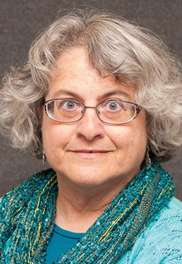
For the last 11 years, February has been designated as Jewish Disability Awareness and Inclusion Month (JDAIM). Is there anything uniquely Jewish about disabilities? No. But is it Jewish to pay attention to a month about disability awareness and inclusion? Yes.
Rabbi Edythe Held Mencher, LCSW, notes in an article published by Union for Reform Judaism earlier this month that it’s important for Jews to observe and participate in this important initiative because it is the Jewish way “to cherish each and every life and to support every struggle for dignity and justice; it is Jewish to work directly with each person and each family to find out what they need to be able to learn, pray, find friends, feel a sense of belonging, and contribute to the shaping and sustaining of community; it is Jewish to dispel prejudices and misconceptions that contribute to isolation, underemployment, and lack of human rights.”
Here in Kansas City we have SASONE, a program of the Jewish Federation of Greater Kansas City. For over two decades now, SASONE (the Hebrew word for “joy”) has, each year, been providing services for approximately 200 children with special needs so that they can attend Jewish preschools, Sunday and Hebrew schools, the Hyman Brand Hebrew Academy and summer camps at the Jewish Community Center.
SASONE’s services, under the direction of Perry Hilvitz, can be accessed in a variety of ways, including:
• Collaborative work between special needs consultants and congregations, families, social programs and camps to create and modify programming to meet the needs of individuals diagnosed as having a special need;
• One-to-one assistance provided by para-educators;
• Modifications and adaptations of curriculum in school settings;
• Increased student and teacher strategy implementation through training in the following areas: classroom management, learning styles, physical disabilities, behavior issues, developmentally appropriate practices, sensitivity training in the area of special needs, applied behavior analysis, transitioning, youth group director and para-educator support, communication with other professionals, conferencing with parents and community service resource list.
SASONE is proud to join together with Jewish organizations and communities from all over the world in this unified effort to raise awareness and champion the civil rights of people with disabilities. In the greater Kansas City area, we are fortunate, blessed and proud to be celebrating the 22nd year of this community-wide special-needs program. SASONE’s tagline continues to be: “Bringing the JOY of Jewish education to children with special needs,” which says it all.
During this Jewish Disability Awareness and Inclusion Month, let us acknowledge SASONE as a wonderful asset to our community. Let us commit ourselves to continue the work necessary to ensure that those with disabilities who need our help have a full, rich and meaningful Jewish life. By doing so, we can become our better selves by continuing to keep the doors open to Jewish education for all of our children.
Next week two programs are taking place in honor of JDAIM. The community is invited to the Jewish Community Campus, which meets federal accessibility standards and guidelines, at 7 p.m. Tuesday, Feb. 26. This educational program will focus on supporting individuals with disabilities both in Israel and in the Kansas City Jewish community. It features Gidi Zur, CEO of Kivunim, New Directions for Special Needs Youth, an organization serving young people with disabilities in Israel.
During the event, Zur will share information about Kivunim’s ground-breaking work in creating new programs and models to help those with disabilities live meaningful and independent lives while contributing to society. He will also share how the Israeli government is investing in programs for people with disabilities, and options that people with disabilities in Israel have for integration and inclusion.
The event also will offer information about the Kansas City Kollel’s Ahoovim program for adults with special needs from Nan Kanter, the assistant program coordinator, and will feature a short performance by talented pianist and Ahoovim participant Andrew Fink.
SASONE will be represented at a community resource fair, which will showcase organizations that work with special populations in Kansas City. The resource fair runs 6:40 p.m.-7 p.m. and immediately following the program from 8:20 p.m.-9 p.m.
This event is organized by Jewish Federation in partnership with Jewish Family Services. Co-sponsors are JCRB|AJC and the Jewish Community Center – The J. Please register for this free event at jewishkansascity.org/newdirections.
Professionals who work with Jewish people who have special needs will also get a chance to learn from Kivunim’s Zur earlier that day at Jewish Family Services — Brookside East. To register for the training session contact Debra Orbuch Grayson M.S., LCMFT, Clinical Manger at 913-327-8298.
At SASONE we believe an all-inclusive community is a stronger community, and while this quest is universal, Jewish values and traditions provide teachable moments to advance inclusion.
Sandy Passer and her husband, Steve, along with Alan Edelman, are the co-founders of SASONE and chairpersons of the SASONE committee. Anyone interested in joining the SASONE committee should contact Sandy or Steve Passer at .




 Sitting in a hospital in Holon has been a most eye-opening experience. The hospital sits on the border of Holon, Tel Aviv and Yafo serving an area mixed with Jewish and Muslim and Christian citizens. And it illustrates what I love about Israel.
Sitting in a hospital in Holon has been a most eye-opening experience. The hospital sits on the border of Holon, Tel Aviv and Yafo serving an area mixed with Jewish and Muslim and Christian citizens. And it illustrates what I love about Israel.